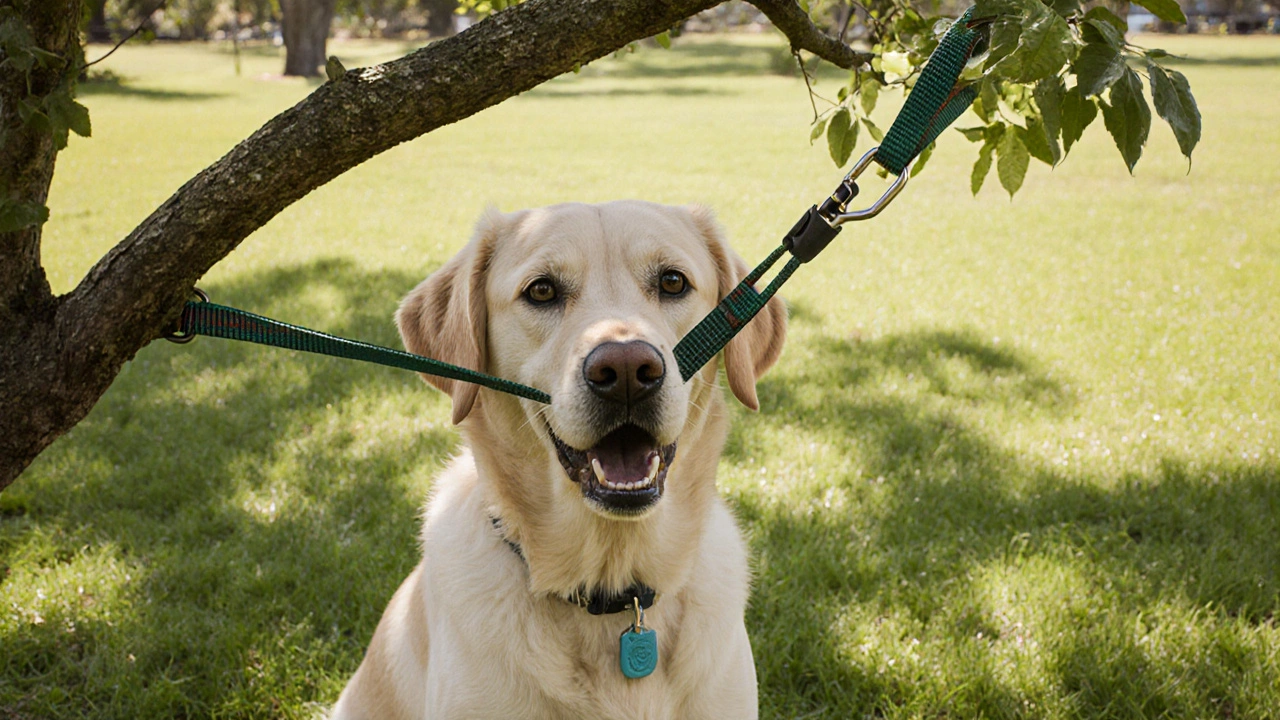Dog Escape Collars: What They Are, Why They Work, and Better Options
When your dog slips out of their collar at the park or bolts through the gate, you’re not alone. That’s where dog escape collars, a type of collar designed to prevent dogs from backing out or slipping free during walks or play. Also known as escape-proof collars, they’re built with tighter fits, special buckles, or unique shapes to stop even the sneakiest dogs from wriggling free. But here’s the thing: not all escape collars are created equal, and some can do more harm than good if used wrong.
Many pet owners turn to these collars after a close call—maybe Fido slipped out of his regular collar and ran into traffic, or your pup learned how to wiggle out of every standard buckle. But while these collars fix the symptom, they don’t fix the cause. A dog that escapes isn’t just being stubborn—they’re often anxious, overstimulated, or bored. That’s why dog harnesses, a safer, more supportive alternative to collars for walking and restraining dogs. Also known as walking harnesses, they distribute pressure across the chest and shoulders instead of the neck are often recommended by vets. A well-fitted harness doesn’t just stop escapes—it reduces strain on your dog’s trachea, prevents choking, and gives you more control without force.
Then there’s dog collar safety, the practice of choosing and using collars that protect your dog’s health while keeping them secure. Also known as safe dog restraint, it’s not just about the hardware—it’s about fit, material, and how often you check for wear. A collar that’s too loose invites escape. One that’s too tight can cause nerve damage or hair loss. And if your dog is a known escape artist, you need to know if they’re slipping out because the collar’s broken, or because they’ve learned how to exploit it.
What you’ll find in this collection isn’t just a list of escape collars to buy. It’s a deeper look at what’s really going on when your dog gets loose. We cover real cases where owners switched from escape collars to harnesses—and saw their dog’s behavior improve, not just their leash control. You’ll read about how training and mental stimulation can be more effective than any buckle. And you’ll see why some so-called "escape-proof" collars actually make dogs more stressed, leading to more attempts to flee.
There’s no magic collar that stops every dog from escaping. But there are smarter, kinder ways to keep them safe—and they start with understanding why they’re trying to get out in the first place. Below, you’ll find honest reviews, vet advice, and real stories from dog owners who stopped chasing quick fixes and started building lasting solutions.
Are Breakaway Collars Necessary for Dogs? Here's What Pet Owners in New Zealand Need to Know
Breakaway collars can save your dog's life if they get caught on something. Learn when they're necessary, how to choose the right one, and why they're not just for small dogs.
